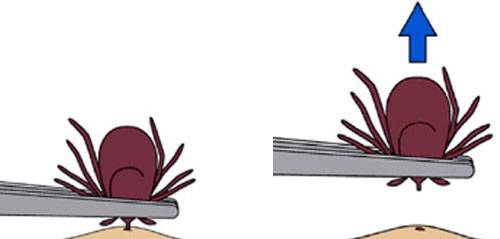There are about 30 different species of ticks that live in Colorado. The most common species are the Rocky Mountain wood tick and the American dog tick. Tick activity peaks in spring and early summer, but ticks can be active throughout the year.
Ticks in Colorado can carry diseases such as Colorado tick fever, tick-borne relapsing fever, tularemia, and Rocky Mountain spotted fever. The best way to prevent these and other tick-borne illnesses is to prevent tick bites. By keeping ticks away from your body, you are less likely to be bitten and get sick from a tick bite. Stay in the know and check out our tick-bite prevention tips below.
Prepare before you spend time outside:
- Avoid wooded and brushy areas with high grass and leaf litter.
- Walk in the center of trails to avoid contact with adjacent vegetation.
- Check with your veterinarian about tick prevention for your pets
- Wear EPA-approved repellents; follow directions on the label.
- Wear long-sleeved, light-colored clothing.
- Tuck your pant legs into your socks and your shirt into your pants.
- Avoid going bare-foot
While you are outside:
- Check for ticks regularly while you are hiking or spending time outside, especially in areas with high grass, or after sitting on rocks or logs.
- Remove any ticks you find by brushing off loose ticks or removing ticks that are attached.
After you're back inside:
- Check your clothing, pets and gear for ticks and do a full-body tick check when coming back indoors.
- Pay special attention to under the arms, behind the knees, between the legs, in and around the ears, in the belly button, around the waist, and in the hair.
- Take a shower within two hours after spending time outdoors, which will wash off any unattached ticks.
- Placing clothes directly in a dryer and drying on high heat can effectively kill ticks on clothing.
- Remove attached ticks as soon as possible. While there are many tick removal devices available, a pair of fine-tipped tweezers or a tick removal spoon work best.
- If you are using tweezers, grasp the tick as close to the skin's surface as possible and pull upward with steady, even pressure.

- If you are using a tick spoon, place the notch on the skin near the tick. Apply slight downward pressure while sliding the spoon forward to remove the tick.
- Do not twist or jerk the tick, as this can cause the mouth-parts to break off and remain in the skin.
- Do not use petroleum jelly, a hot match, dish-soap, nail polish, or other folk remedies to remove ticks. They are generally not effective and may increase the risk of infection.
- After removing the tick, disinfect the bite site and wash your hands with soap and water.
- Remove leaf litter and brush from your yard. This will decrease the areas where ticks can hide.
- Keep your lawn mowed to 3 inches or less. This lowers the humidity at ground level making it difficult for ticks to survive.
- Create a 3-foot barrier of mulch or crushed stone around the outside of your yard. Ticks do not like to cross over dry areas.
- Increase sunlight by pruning the lower branches of trees or thinning out shrubs and hedges. This will cause ticks to dry out and die.
Submit a Tick!
The Colorado Department of Health and Environment (CDPHE) wants your ticks!
- Visit the Colorado Department of Public Health and Environment's (CDPHE) Citizen Scientist Tick Surveillance Project to submit your tick to CDPHE to help us better understand what types of ticks we have in our state and where they are located.
- An entomologist will determine the species of the submitted tick. Ticks will not be tested for diseases.
- Note: The Colorado Department of Public Health and Environment will not routinely follow up with submitters to discuss the tick they submitted.

